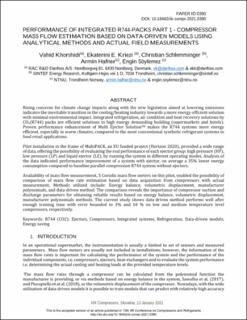| dc.description.abstract | Rising concerns for climate change impacts along with the new legislation aimed at lowering emissions indicates the inevitable transition in the cooling/heating industry towards a more energy-efficient solution with minimal environmental impact. Integrated refrigeration, air condition and heat recovery solutions by CO2 (R744) packs are efficient solutions to high energy demanding building (supermarkets and hotels). Proven performance enhancement of Multi Ejector SolutionTM makes the R744 systems more energy efficient, especially in warm climates, compared to the most conventional synthetic refrigerant systems in food retail applications. Pilot installation in the frame of MultiPACK, an EU funded project (Horizon 2020), provided a wide range of data, offering the possibility of evaluating the real performance of each ejector group: high pressure (HP), low pressure (LP) and liquid ejector (LE), by running the system in different operating modes. Analysis of the data indicated performance improvement of a system with ejector, on average a 35% lower energy consumption compared to baseline parallel compression R744 system without ejectors. Availability of mass flow measurement, 5 Coriolis mass flow meters on this pilot, enabled the possibility of comparison of mass flow rate estimation based on data acquisition from compressors with actual measurement. Methods utilized include: Energy balance, volumetric displacement, manufacturer polynomials, and data-driven method. The comparison reveals the importance of compressor suction and discharge parameters for obtaining reliable results based on energy balance, volumetric displacement, manufacturer polynomials methods. The current study shows data-driven method performs well after enough training time with error bounded to 3% and 10 % on low and medium temperature level compressors, respectively. | en_US |
